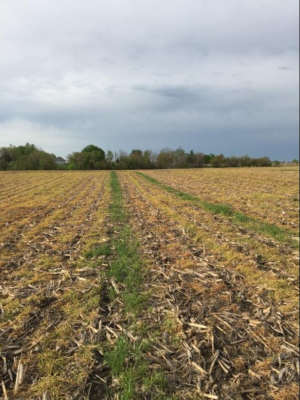By Dr. Bob Hartzler
Current cool temperatures increase the risk of failures in terminating cover crops. While cereal rye continues to grow during these conditions, activity of herbicides is reduced. Translocation of glyphosate to growing points is reduced under cool temperatures, slowing activity and increasing the potential for control failures. It is generally recommended to avoid applications when nighttime temperatures fall below 40 F, and we prefer temperatures at application to be at least in the mid-50s with clear skies. Based on current forecasts, herbicide applications to terminate in many areas of the state should be delayed until more favorable conditions exist.
In situations where termination cannot be delayed, the following steps can reduce the risk of control failures:
1) Increase glyphosate rate from what is normally used.
2) Use appropriate rates of AMS and surfactants.
3) Evaluate the potential for tank-mix partners to reduce glyphosate activity such as preemergence herbicides with significant foliar activity. Also, the addition of UAN as a carrier can reduce the absorption and activity of glyphosate.
Successful termination of cover crops is critical due to their competitiveness with crops. Under ideal conditions the effectiveness of glyphosate allows considerable flexibility in application parameters. However, with current cool conditions make appropriate modifications to maximize the likelihood of success. In situations where there is significant survival, delay follow-up treatments until new growth is present. That delay may be more than 1-2 weeks during cool conditions. By the appropriate time for retreatment, temperatures should be favorable for better herbicidal activity.

Source : iastate.edu